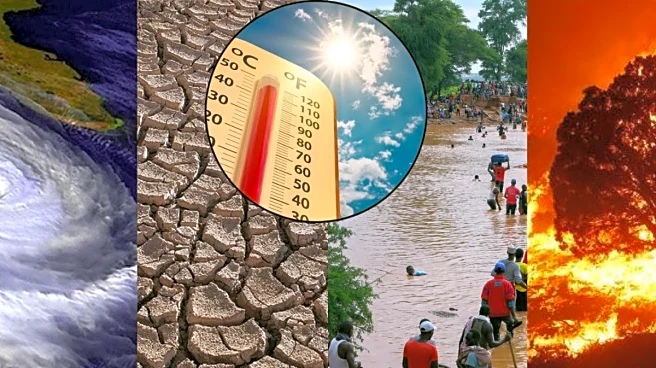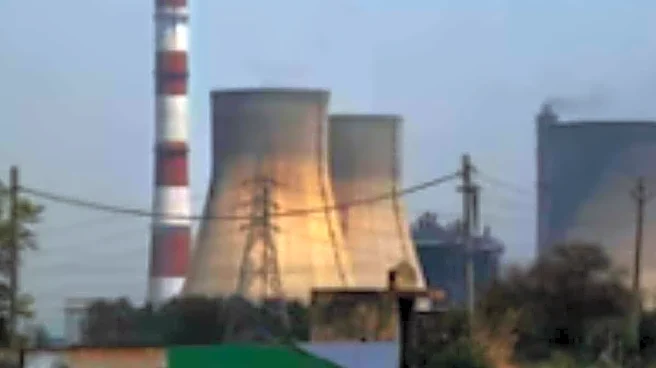The latest Emissions Gap Report 2025 from the United Nations Environment Programme has confirmed what scientists have warned for years, the world is no longer on track to limit global warming to 1.5°C.
Based on current trajectories, the global average temperature will exceed this threshold before 2035, potentially within the next decade. That number may appear small, a margin too slim to matter, yet within that half-degree lies the difference between adaptation and irreversible loss.
In reality, every tenth of a degree represents a shift in how humans will eat, sleep, travel, and stay healthy. From heat-induced insomnia in megacities to rising anxiety among young adults about a future of environmental instability, the climate story is no longer one of polar ice or distant islands.
Yet another study found that 22 of the planet’s 34 “vital signs”, indicators like glacier mass, ocean heat, and deforestation rates are flashing red. Together, they paint an unambiguous picture- the Earth’s natural systems are signalling distress, while human systems are struggling to keep pace.
This is no longer a debate about abstract science or faraway futures. It is about the air in our cities, the food on our plates, the stress in our bodies, and the choices that shape our everyday lives.
What Does Crossing 1.5°C Mean?
Crossing the 1.5°C threshold does not mean a sudden planetary collapse, but it marks the point at which many natural and human systems begin to strain beyond repair. According to the UNEP report, this limit was not arbitrary; it represents a threshold for preventing the most severe feedback loops—melting permafrost, collapsing coral reefs, and extreme weather cycles that could become self-reinforcing. Once we cross this line, multiple systems that humans and ecology depend on begin entering zones of greater risk.
For individuals, this means that once-familiar seasons will feel different. Summers that were considered exceptional will become the norm. The UK Met Office projects that, by the mid-2030s, London could experience summer temperatures regularly touching 40°C.
Globally, regions across South Asia and Africa will face lethal wet-bulb conditions heat combined with humidity that the human body cannot physiologically endure for long. With regions facing more intense heatwaves with humidity amplifying their effect; outdoor work, commuting and even sleep will be affected.
The question ceases to be “if” and becomes “when, where and how badly”. The fact that such changes are woven into our daily rhythms, outdoor work hours will shrink, energy bills for cooling will rise, and daily commutes could become genuine health hazards. The “climate crisis” will cease to be an environmental headline and become a scheduling reality.
Are Earth’s “Vital Signs” Already Warning Us?
Yes and in sticking terms. The recent BioScience 2025 Climate reports why we are hurtling toward climate chaos, of the total 34 vital indicators it was found that 22 of them are at record or near-record levels. These vital signs include:
- Concentrations of atmospheric CO₂ and methane
- Ocean-heat uptake
- The extent of summer sea ice
- Number of extremely hot days relative to mid-20th-century norms
- Areas under extreme drought
For example, global tree-cover loss due to wildfires reached a new high in 2024. What matters here is not simply that measurements are worse, but that many of the systems are interlinked. The collapse of one element say, permafrost thaw or a significant drop in Arctic sea ice could trigger cascading effects. As the study put it, “Crossing one tipping point could set off a cascade of other tipping-point crossings.”
For a lifestyle lens, this means the “background conditions” of our lives — the seasons, the quality of air, the availability of water, the stability of food supplies may shift more rapidly than many of us expect.
How Does This Affect Food, Water, and Civilization?
At 1.5°C, climate change becomes a constant presence in every meal, every shower, and every commute. Agriculture, the foundation of food security faces shrinking yields. The IPCC projects that yields of wheat, rice, and maize may fall by up to 10% per degree of warming, while pests and disease pressure increase.
In practical terms, this reshapes global diets. Coffee, chocolate, and wine crops tied to precise temperature and rainfall patterns are already migrating to new regions. Prices rise, quality fluctuates, and traditional farming communities face existential threats.
Water scarcity will define urban futures. The World Bank estimates that by 2035, one in four people will live in regions facing chronic water shortages. Cities like Bengaluru and Cape Town have already flirted with “Day Zero”, when reservoirs ran dry. As climate patterns intensify, urban water wars may become a defining feature of governance.
Meanwhile, cities designed for temperate climates are straining under heat. Asphalt softens, rail lines buckle, and outdoor labour becomes hazardous. Demand for air-conditioning surges, but so does the energy it consumes, a feedback loop that feeds the problem it seeks to solve. The comfort we build often comes at the planet’s cost.
Are Health Risks Already Visible in The Environment?
The World Health Organization estimates that between 2030 and 2050, climate change will cause an additional 250,000 deaths per year from malnutrition, malaria, diarrhoea, and heat stress. In 2024, parts of southern Europe recorded spikes in heat-related hospital admissions, particularly among the elderly and outdoor labourers.
But the health effects are not only physical. Psychologists have noted a marked rise in “eco-anxiety,” especially among younger populations. A 2023 study published in The Lancet Planetary Health found that 59 percent of respondents aged 16–25 reported feeling “very or extremely worried” about climate change. This anxiety manifests in lifestyle choices from delaying parenthood to shifting careers toward sustainability.
Physiologically, hotter nights reduce sleep quality, impair focus, and raise cardiovascular risk. Air pollution, amplified by heat worsens asthma and lung disease. These are not distant threats; they are measurable in hospital data and daily discomfort. Climate stress has quietly entered the public health lexicon, and its effects are cumulative, not episodic.
Can Individual Choices Still Change the Outcome?
Individual actions like cycling to work, eating less meat, or reducing energy use are meaningful but insufficient without systemic shifts. UNEP’s 2025 report notes that current national commitments would still lead to a 2.8°C increase by century’s end because the gap between policy ambition and practical implementation remains vast.
However, behavioural change remains critical for shaping social pressure and consumer demand. When millions alter consumption patterns, markets follow. For instance, plant-based alternatives, once niche, have become mainstream due to changing dietary consciousness. Similarly, the fashion industry, one of the largest polluters has begun rethinking fast fashion models as younger consumers prioritise longevity over novelty.
How Climate Change Will Drive Extreme Weather in The Next Decade?
Every year of delay narrows the choices available later. Once ice sheets collapse or permafrost thaws, reversal becomes nearly impossible. The UNEP report warns that the cost of inaction multiplies exponentially, not linearly. How the next decade will impact the weather is worrying scientists and environmentalists because climate change could look like:
More intense heatwaves
Warmer global temperatures increase the likelihood and duration of extreme heat events, pushing more days beyond dangerous thresholds and raising health risks.
Longer, deeper droughts
Higher heat and shifting rainfall patterns dry out soil and vegetation, extending drought periods and stressing water supplies and ecosystems.
Amplified wildfires
Drier vegetation plus more frequent heatwaves create ideal fuel for wildfires, which then spread faster and burn larger areas.
More severe floods
A warmer atmosphere holds more moisture, so when storms hit they drop heavier rainfall, increasing flood risk even in previously dry regions.
Choices about where to live, what to eat, how to travel, and how to care for health are increasingly climate decisions. Crossing 1.5°C does not end the story; it changes the tone. It forces a shift from the question “Can we stop it?” to “How do we live wisely within it?” The answers lie not just in reports, but in how we adjust the routines of everyday life with awareness, with urgency, and with the recognition that survival and dignity are still within our control.


/images/ppid_59c68470-image-176241257034241511.webp)



/images/ppid_59c68470-image-176241758421792954.webp)







/images/ppid_59c68470-image-176223755115888086.webp)